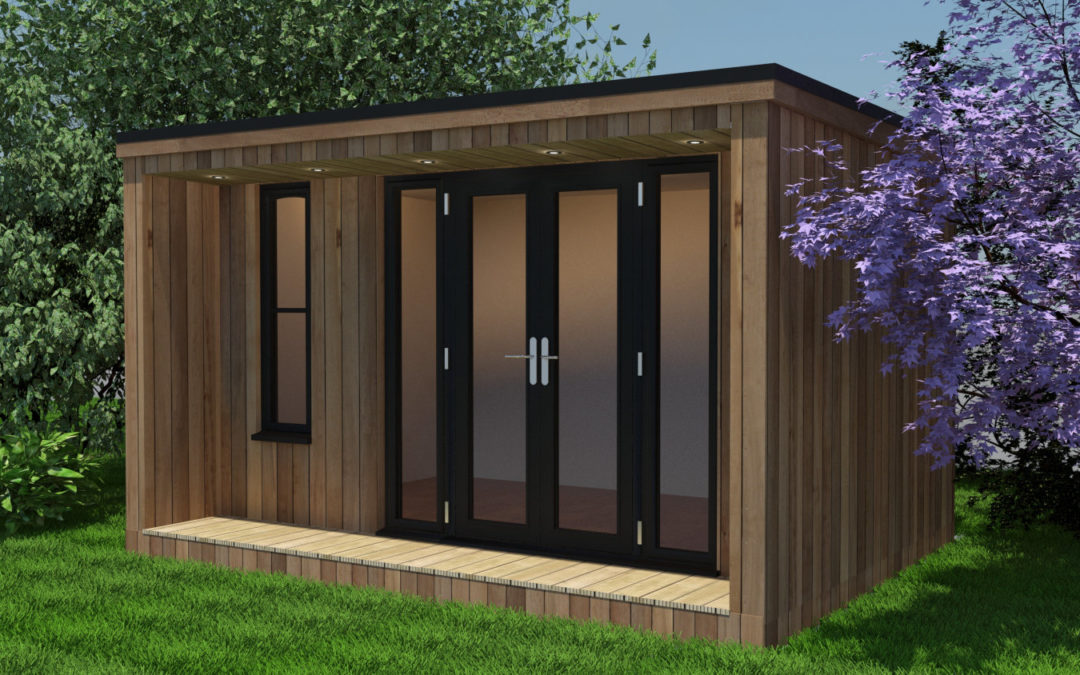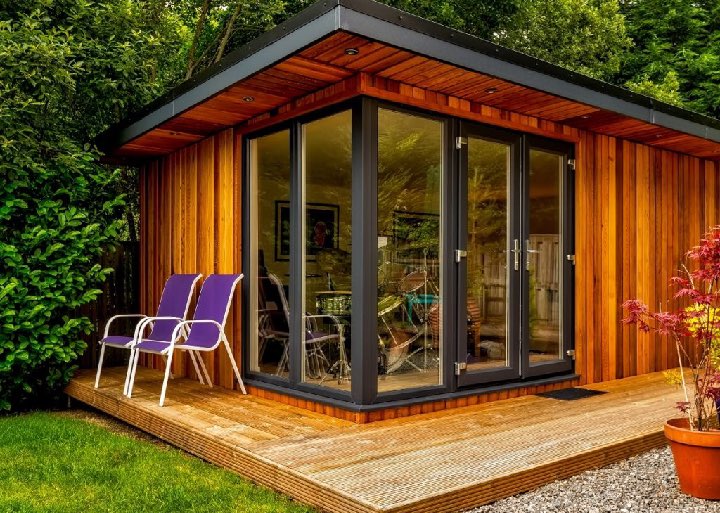New Info For Planning Permission On Garden Outhouses
Wiki Article
In Conservation Areas, What Approvals Are Required For Garden Rooms And Other Structures?
To protect the character and aesthetics of conservation areas, when construction of extensions, gardens or conservatories within these designated zones, certain restrictions are in place. Here are the major considerations for planning permission in conservation zones:
Any building or extension that would otherwise fall under allowed development rights might require planning permission in the conservation area. Garden rooms, sheds, or other outbuildings are included.
Size and Scale
Structures of any size may require planning permission if they are deemed to affect the character of the conservation zone. In designated areas, there are stricter limitations on the size and design of new structures or extensions.
Location of the Property:
Extensions and buildings which are located on the front or side of the property are more likely to require planning permission. The rear of structures may also need permission if is visible from public spaces or if it affects the overall appearance of the property.
Materials and Design
The selection of materials and designs is essential in conservation areas. The selection of materials for any extension or building has to be in line with the historical or architectural significance of the area. Planning permission will be needed to ensure that these requirements are met.
Demolition:
In conservation areas, it is essential to obtain planning approval for the demolishment of any existing building or part of a structure, which includes outbuildings or boundary walls. This is done to ensure all changes don't alter the character of an area.
Height Restrictions
In conservation areas there are stricter restrictions on height. Anything that is over 2.5 meters high (especially within two meters of the boundary line) will likely require approval from the planning department.
The Effects on the Surrounding Environment:
Planning permission is required if the building or extension proposed significantly impacts the visual appearance or the setting of the conservation area including the views that are visible from and into the area.
Use of the building:
Even if the garden room or outbuilding is permitted within dimensions, the intended use (e.g. for example, as a home office, studio or other habitable space) could require approval for planning due to possible changes in the property's use.
Modifications to the original design:
Extensions that exceed specific dimensions or volumes or change the external appearance of the building usually require approval for planning. This includes conservatories and other significant changes.
Curtilage Structures:
In a conservation zone the structures within the perimeter of a listed property require approval for planning. This includes new extensions, outbuildings or changes.
Trees protected by the forest
The trees in conservation zones are typically protected. If you intend to build your home on trees, additional permits, like permission for tree works and planning permission, may be needed.
Local Authority Guidelines:
Local planning authorities can establish specific guidelines and limitations for each conservation area. These may include detailed criteria regarding what's permissible and not permitted, adapted specifically to the unique characteristics of the area.
In summary, obtaining planning permission in an area designated as a conservation zone requires a detailed analysis of how the proposed garden room or conservatory, an outhouse, garden office, or extension may affect the area's historic and architectural nature. To ensure that you plan is compliant with the relevant rules, it's essential to consult with your local authorities before beginning the planning process. View the best permitted development garden room for website examples including garden rooms in St Albans, conservatories and garden rooms, garden room permitted development, composite summer house, Tring garden rooms, do you need planning permission for a garden room, how to lay decking on soil, do you need planning permission for a garden room, garden room permitted development, outhouses for garden and more.

What Are The Requirements For Garden Rooms And Other Structures Related To Neighbourhood Concerns?
Planning permission might be required for garden rooms, conservatories or outhouses. Two important considerations overlooking and privacy
Planning permission is normally needed when a new construction could overlook neighboring properties and cause privacy loss. This will ensure that the new construction does not affect the lives of nearby residents.
Shadowing, loss of light
If the proposed building could overshadow or cause a major loss in light for neighboring homes, planning permission could be required. The local authority for planning analyzes the impact of sunlight on adjacent homes.
Noise and Disturbance
The planning permission is necessary if the garden or an extension is intended to be used for noisy activities (such as clients visiting your home office, a music studio, an office, etc.). This will ensure that the noise levels are acceptable and do not interfere with the neighbors.
Visual Impact and Character
The new structure’s size, shape and overall design must reflect the style of the neighborhood. The planning permission is required to ensure that the proposed development is visually appealing and does not harm the aesthetics of the neighborhood.
Boundary Proximity
Planning permission might be required for buildings that are built close to the property's boundary in particular when the structure is taller than 2,5 meters, and is within 2 meters. This is to prevent any disputes or impacts on the property adjacent to it.
Shared Access Rights and Rights of Way
In order to prevent obstruction or causing harm to shared access points and rights of way, or even constructions, planning approval is needed.
Oppositions from Neighbors
Residents in the immediate vicinity have the right to speak with neighbors regarding planning applications. Planning authorities will be taking into consideration concerns raised by neighbors when deciding whether or not to grant permission.
The impact on property values:
Even though it's not always an issue of primary importance, changes which may impact the value of adjoining homes could impact on the need for permission to plan. Local authorities will take into account the effect of these changes when they make their decisions.
Covenants and Deed Restrictions
There might be deed restrictions or covenants on the property that need to be followed, regardless of planning permission. Legal agreements can determine what can and cannot be built. not permitted to be constructed. This can affect neighborhood harmony.
Construction Disturbance:
Planning permission might be granted to address issues regarding disturbances that is caused by construction like dust, noise, and traffic. It might be necessary to impose conditions in order to reduce the impact on neighboring properties.
Impact on Infrastructure
If the new building places additional stress on infrastructure in your area (e.g. parking, drainage or roads) A planning permit assures that the impact are assessed and handled accordingly.
Community Consultation
In certain instances there are times when a greater community consultation may be needed especially in relation to more controversial or large-scale development plans. This allows for an more democratic process of decision-making which takes into account the opinions of the community.
In conclusion, the neighborhood's concerns play an important role in the process of obtaining planning permission for conservatories or garden rooms. To ensure that the proposed development has no negative impact on the living environment and privacy, the quality of lighting, noise levels and the overall character of the neighborhood It is essential to verify the plans. Consulting with the local planner and engaging with neighbors early in the process of planning can help to resolve these issues and help facilitate the process of approving the project. Check out the recommended luxury garden designers st albans for website recommendations including luxury outhouse, outhouse, best electric heater for cabin, garden buildings , garden room planning permission, what size garden room without planning permission, 4m x 4m garden room, garden rooms brookmans park, garden rooms hertfordshire, outhouse buildings and more.

What Is The Permission Required For Garden Rooms And So On., In Terms Utilities And Infrastructure
Planning permission may be needed to construct garden rooms, outhouses or garden offices. Infrastructure and utilities are additionally important aspects to consider. These are the main aspects to take into consideration: Water Supply and Drainage:
It may be necessary to obtain planning permission when the structure is linked to the local water supply or drainage system. Local water authorities may be required to consider the effects of the construction on water supply or sewage systems.
Gas and Electricity Connections
If the new structure requires connection to gas or electricity supply, planning permission might be required. It is vital that the connections are in compliance with all safety standards and construction rules.
Utility Easements:
Planning permission may be required if the proposed structure is situated in an area that is designated for utilities and infrastructure. Construction in these areas may require the approval of the local utility provider.
Septic tanks and Sewage Systems
Planning permission is necessary when the building is required to have a septic tank or on-site sewer treatment system. For these systems, it is important to comply with the standards for health and environmental regulations.
Drainage and Surface Water Management:
It is possible that you will need approval for drainage plans and surface water runoff. You might need to take steps to prevent erosion, flooding or pollution of water.
Access to Utilities for Construction
Permission is required if the construction process necessitates temporary access to services, like water (for reasons of construction). The temporary connection has to meet safety and environmental standards.
Local Impact on Infrastructure:
It is essential to obtain permission for planning so that you can determine what impact the construction will have on local infrastructure. This includes utilities, roads and other services that are public. Local authorities will assess whether existing infrastructure can support the new development.
Waste Management:
Planning approval may include requirements on waste management and recycle in the course of construction and after. To limit the environmental impact of construction, it's essential to make adequate provision for waste management and recycling.
Efficiency of Energy Efficiency:
It is possible that you require permission for the installation of renewable energy systems such as heat pumps or solar panels in a new building. The compliance with building regulations as well as environmental standards is essential.
Telecommunications and Internet Connectivity
Planning permission may be required when the proposed structure requires telecommunications and internet connections. In order to make sure that telecommunications infrastructure is compliant with standards and regulations, it is vital that the infrastructure conforms to these.
Accessible via Footpaths and Roads
Planning permission might be needed for the construction or modification of access roads or footpaths in the construction of the new structure. When building roads and paths it is crucial to meet the safety requirements.
Accessibility to Public Transport
Planning permission could be needed when the proposed structure has any impact on public transport (such as stops for buses or train stations). Public transport infrastructure must be in compliance with all applicable regulations and standards.
In summary utilities and infrastructure aspects are essential in determining whether or not a planning permit is required for garden rooms, extensions or outhouses. They also need to be considered for gardens offices. Check with the local planning authority at the earliest possible point during the planning stage to ensure that the building is in compliance with applicable standards and regulations. Check out the recommended garden outhouse uk for blog tips including garden room, armoured cable for garden room, copyright garden rooms, insulated garden rooms, outhouse buildings, composite garden rooms, armoured cable for garden room, garden room permitted development, ground screws vs concrete, luxury outhouse and more.
